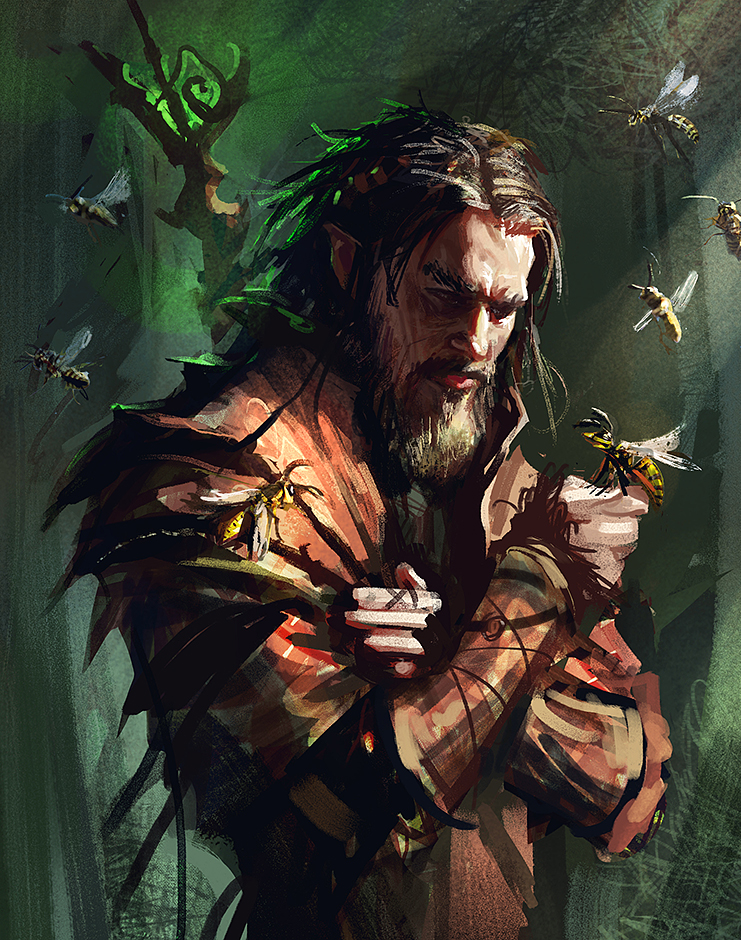
About this Supplement
Woodsman's Wilds contains supplemental material and tables for DMs. Temperate forests are a common sight throughout the Material Planes of Dungeons & Dragons and beyond. As a DM, you may find that your players spend a considerable amount of time wading through the forest environment, unawares of the troves of resources and ventures it has to offer. You can use this supplement as inspiration for forest locations, as a quick reference for things to see and do in the woods, or for fleshing out your world's ecosystems.
Woodsman's Wilds is a sequel to Barmaid's Brewery. See the credits at the end of this document for a link to Barmaid's Brewery if you would like to enhance your drinking establishments.
Official Material
The 5th edition of Dungeons & Dragons already provides some guidance regarding adventures in the forest. Pages 106 to page 112 of the Dungeon Master's Guide have tables, rules, and hazards relating to the wilderness. If you want your entire campaign to take place in the wilderness, see page 73 of the Dungeon Master's Guide for a table of goals for your party to pursue. Page 302 of the Dungeon Master's Guide and page 97 of Xanathar's Guide to Everything suggest a list of monsters that are present in the forest environment.
Gathering Materials
Spellcasting, crafting with artisan's tools, and brewing potions all require raw materials at times. The forest is a bounty for anyone in need of a meal or ingredients. This section contains information about objects and materials that can be found in the forest. Depending on your setting or the time of the year, you may decide that a certain resource in this section isn't available.
Foraging for Food and Water
See page 111 in the Dungeon Master's Guide for the basic rules regarding foraging for food and water.
You can roll on the Forest Harvest table to determine the type of food a player finds when they successfully forage in the woods.
Forest Harvest
| d20 | Harvest |
|---|---|
| 1 | Acorns |
| 2 | Blackberries |
| 3 | Cattails |
| 4 | Chanterelles |
| 5 | Chestnuts |
| 6 | Crayfish |
| 7 | Dandelions |
| 8 | Elderberries |
| 9 | Juniper berries |
| 10 | Lake clams |
| d20 | Harvest |
|---|---|
| 11 | Morels |
| 12 | Nettles |
| 13 | Oyster mushrooms |
| 14 | Parsnips |
| 15 | Pecans |
| 16 | Plantains |
| 17 | Rose hips |
| 18 | Strawberries |
| 19 | Thistle |
| 20 | Wild garlic |
Poisonous Fruits and Mushrooms
Not all of nature's gifts are edible, and safe food can be difficult to distinguish from deadly grub. When a character finds fruits or mushrooms while foraging, you can choose to roll a d10 to determine whether the foodstuff is poisonous or not. On a roll of 10, the fruits or mushrooms look like a safe variety, but are in fact poisonous. A character can distinguish safe food from poisonous food with a successful DC 15 Intelligence (Nature) check. Poisonous fruits and mushrooms have one or more of the following properties of your choice, which affect a creature that eats it. Unless the fruits or mushrooms are especially worrisome, they only have the Noxious property.
Poisonous fruits and mushrooms don't confer any nourishment if they're consumed, unless they are rendered edible with the purify food and drink spell. Additionally, they can be used to make poisons with the same properties using a poisoner's kit.
Instant Death. After 1 hour, the creature must make a DC 20 Constitution saving throw. On a success, the creature gains 1 level of exhaustion. On a failure, the creature gains 1d4 + 1 levels of exhaustion. If the creature fails their saving throw by 5 or more, they gain 6 levels of exhaustion instead.
Lingering Decay. The creature must make a DC 10 Constitution saving throw. On a failure, the creature is poisoned for 24 hours. While poisoned in this way, the creature must make a death saving throw with disadvantage each time they drop to 0 hit points and are knocked unconscious. At the end of each hour, the creature can make another Constitution saving throw, ending the poison on a success.
Noxious. The creature must succeed on a DC 10 Constitution saving throw or be poisoned for 1 hour.
Sapping. The creature must succeed on a DC 10 Constitution saving throw or have one of its ability scores reduced by 1d4, chosen at random. The reduction lasts until the creature finishes a long rest.
Toxic. The creature must succeed on a DC 15 Constitution saving throw, taking 2d10 poison damage on a failure, or half as much damage on a success.
Finding a Specific Resource
For a variety of reasons, a character may want to seek out a specific resource in the woods. The character makes a Wisdom (Survival) when you call for it, which can coincide with foraging. At your discretion, you can choose for the character to make some other ability check instead. For example, an alchemist searching for a potion ingredient may be able to make a Wisdom (Arcana) check. Regardless, consult the Resource Difficulty table on the following page to determine the DC for finding a given resource. The table contains spell components, tool constituents, and potion ingredients that one may find in the woods.
Spells such as locate object and locate animals or plants can be used to find resources without having to make an ability check, given the resource is present within the range of the spell.
Resource Difficulty
| Resource | DC |
|---|---|
| Acorn | 5 |
| Amber | 20 |
| Animal fur | 12 |
| Bat fur | 17 |
| Bat guano | 15 |
| Bone | 15 |
| Carrot | 10 |
| Caterpillar cocoon | 12 |
| Clay | 10 |
| Cricket | 5 |
| Dragon scale | 30 |
| Eggshell | 15 |
| Feather | 10 |
| Firefly | 10 |
| Flea | 10 |
| Flower | 5 |
| Grasshopper | 5 |
| Herbalism kit constituents | |
| For antitoxin | 15 |
| For potion of healing (common) | 10 |
| Herbs | |
| For find familiar | 10 |
| For hallow | 17 |
| Holly berry | 15 |
| Honey, honeycomb | 10 |
| Hot pepper | 17 |
| Kernel of grain | 7 |
| Legume seed | 12 |
| Licorice root | 15 |
| Loam | 12 |
| Mandrake root | 20 |
| Mica | 10 |
| Mistletoe | 10 |
| Moonseeds | 12 |
| Nut shells | 12 |
| Oak bark | 5 |
| Phosphorescent moss | 17 |
| Pitch | 10 |
| Poisoner's kit constituents | |
| For basic poison | 15 |
| For rare poisons | 22 |
| For extraordinary poisons | 30 |
| Resource | DC |
|---|---|
| Potion ingredients | |
| For common potions | 10 |
| For uncommon potions | 15 |
| For rare potions | 20 |
| For very rare potions | 25 |
| For legendary potions | 30 |
| Reed | 7 |
| Rock, pebble | 5 |
| Rhubarb | 12 |
| Sand | 7 |
| Sesame seeds | 10 |
| Shamrock leaf | 5 |
| Skunk cabbage | 10 |
| Snakeskin | 15 |
| Spiderweb | 10 |
| Spruce | 5 |
| Sumac | 10 |
| Thorn | 5 |
| Twig | 5 |
| Wychwood | 15 |
| Yew leaf | 10 |
Making Unique Forests
A forest has the propensity to be a realm of whimsy and fantasy. You can roll on the Fauna Traits, Flora Traits, or Geographic Features tables to give your forest a unique aspect. Additionally, you can roll on the Forest Mythos table to give your forest a tidbit of folklore.
Forest Mythos
| d6 | Mythos |
|---|---|
| 1 | Each tree in the forest contains the soul of a child slain by a hag that lives in the woods. |
| 2 | The forest used to be an empty field, until one day a sleeping beholder dreamt it into existence. |
| 3 | A green dragon dropped her egg into the forest while flying overhead. The wyrmling survived, and now protects the forest as if the trees were its mother. |
| 4 | The tallest tree in the world grows in the forest, but it exists only on the Ethereal Plane. |
| 5 | A goblin ranger can save you from perils in the woods, as long as you can pay your weight in garlic. |
| 6 | The forest was personally planted by a god of agriculture and fertility. |
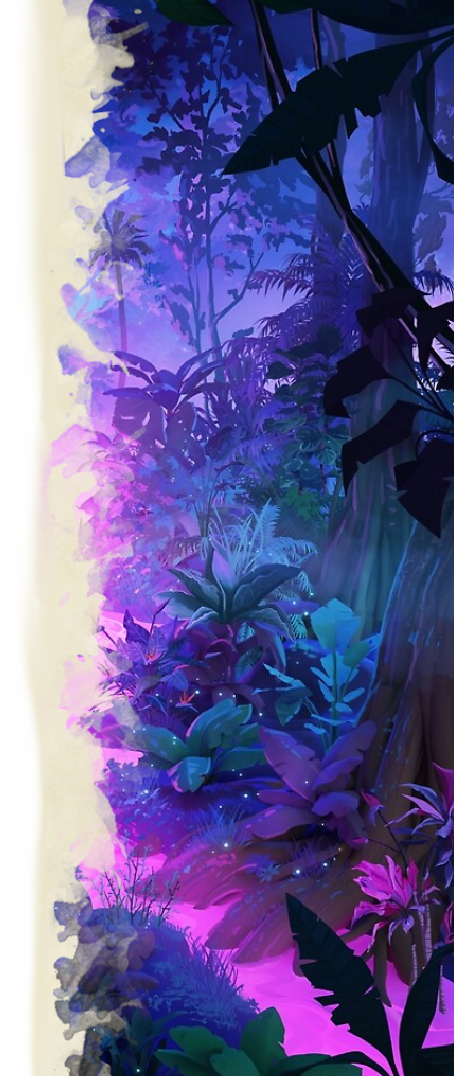
Fauna Traits
| d6 | Trait |
|---|---|
| 1 | Creatures from the forest that are normally Beasts are Fey or Monstrosities instead. |
| 2 | Animals have appendages they don't ordinarily have, such as feathers, antlers, hooves, tusks, or gills. |
| 3 | All of the forest critters have been replaced with clockwork facsimiles of animals. |
| 4 | Beasts in the forest have been painted by a dragon's presence. Their natural weapon attacks deal acid, cold, fire, lightning, or thunder damage instead of their usual damage type. |
| 5 | The animals are of an unusual size, as if they were under the effects of the enlarge/reduce spell. |
| 6 | Most of the animals in the forest have been awakened with the awaken spell. |
Flora Traits
| d6 | Trait |
|---|---|
| 1 | The foliage is a color other than green. |
| 2 | Towering mushrooms take the place of trees. |
| 3 | Waterways are clogged with dense aquatic foliage. |
| 4 | Vegetation on the forest floor shifts away from travelers' paths to avoid being trampled. |
| 5 | Floral scents pleasantly fill the air, as the forest is in full bloom. |
| 6 | All of the plants in the forest are connected by a single root system. |
Geographic Features
| d10 | Feature |
|---|---|
| 1 | Great rocky spires dot the landscape. The forest exists within the canyons between them. |
| 2 | The forest is atop a series of hills, which catch the elements. There's a constant gale, leaving the forest windscarred and twisted. |
| 3 | The humidity of the forest is uncharacteristic for the region, either too wet or too dry. |
| 4 | A thick layer of fog settles over the forest, causing the area to be lightly obscured and limiting vision to a 30-foot radius. |
| 5 | The forest grows vertically up a mountainous cliff face. |
| 6 | Ancient volcanic ash serves as the soil from which the forest grows. |
| 7 | Quicksand is a common hazard throughout the forest. |
| 8 | The forest is in a low basin that periodically floods. |
| 9 | The forest mind-bendingly stretches between the Material Plane and some other plane of existence. |
| 10 | The ground is dangerously acidic. Only the toughest of plants can survive here. |
Forest Encounters
Every hour or so of travel in the forest, you can check for a random encounter using the rules for random encounters on page 86 of the Dungeon Master's Guide. If a random encounter occurs, you can roll on either the Forest Combat Encounters or Other Forest Encounters table to determine the nature of the encounter. The encounters presented in this section are meant to provide you with inspiration for formulating your own encounters on the fly. Use your power of improvisation to provide your players with a challenge that is fitting for your own setting.
Remember, the goal of a random encounter is not meant to be a deadly travail. Rather, they enable players to spend their resources as they see fit. Having several random encounters in a day can allow characters that rely on short rests to shine, and can force players to be careful with their limited abilities.
Combat Encounters
The following encounters are intended to be resolved via combat.
Forest Combat Encounters
| 1d20 | Encounter |
|---|---|
| 1 | Aerial stalkers |
| 2 | Ambling plants |
| 3 | Awakened proclaimer |
| 4 | Curious cub |
| 5 | Dungeon sinkhole |
| 6 | Ethereal ambush |
| 7 | Fey pranksters |
| 8 | Foreboding remains |
| 9 | Giant engineers |
| 10 | Goblin trickster |
| 11 | Hampered foe |
| 12 | Hungry pack |
| 13 | Hunter |
| 14 | Oddity |
| 15 | Raiding party |
| 16 | Reckless ranger |
| 17 | Sick animal |
| 18 | Specter |
| 19 | Swarm defenders |
| 20 | Wildfire |
Aerial Stalkers. A group of flying creatures hover over the characters, attempting to frighten them with shrieks or roars depending on what kind of creatures they are. They flutter outside of attacking range, waiting for an opportunity where they can single out a character before attacking.
Ambling Plants. The path leads through a dense area of underbrush. Some of the plants are creatures, which move to attack the characters. See the end of this supplement for an expanded list of plant creatures.
Awakened Proclaimer. An awakened creature makes its presence known with a proclamation of its superiority over humanoids and civilization. Then, it attacks any characters with manufactured weapons or armor.
Curious Cub. A baby animal appears with its mother. The baby takes a liking to one of the characters and tries to take some of their equipment, something shiny or tasty looking. If the baby is harmed or is stopped from taking the equipment, the mother attacks.
Dungeon Sinkhole. Along a forest path, the characters encounter a cohort of monsters that would typically be found in a dungeon, such as oozes or mimics. Following their tracks leads to a sinkhole, revealing the ancient halls of a dungeon within.
Ethereal Ambush. A creature from the Ethereal Plane attempts to catch the characters off guard. The creature can be a phase spider, or another creature that you give the phase spider's Ethereal Jaunt ability.
Fey Pranksters. Several fey notice the characters approaching, and conjure an illusion to draw them near. The fey don't intend on killing the characters, but they will cast spells and push them around before attempting to escape or diffuse the situation.
Foreboding Remains. The characters come across a humanoid corpse that was mauled to death. They have some time to inspect the scene for clues before the perpetrator arrives.
Giant Engineers. Giants or giant kin are in the process of excavating resources or chopping trees to build a machine, perhaps with the help of wily kobolds. They're hard at work and can be sidestepped, but will attack any intrepid characters that wander too close.
Goblin Trickster. A goblin or a bugbear hiding in a bush uses a spell scroll to cast a high level spell before the characters. The goblinoid then demands a sacrifice, lest the characters want a taste of the goblinoid's might. However, the goblinoid is bluffing, and doesn't know any spells or have any more spell scrolls.
Hampered Foe. The characters are attacked by a creature that would normally be too strong for them. However, the creature is hampered in some way. It may be missing hit points from a previous fight, or it may have lost its eyes and suffers from the blinded condition.
Hungry Pack. A hungry pack of animals ambushes the party. They attempt to separate the weakest looking party member and drag them away to be eaten.
Hunter. A hunter attacks the characters, mistaking them for prey. After realizing they've committed an assault, the hunter attempts to kill the party and any witnesses.
Oddity. A misplaced oddity, like a giant octopus or a yochlol, attacks the party. How it got to the forest is up to you. It could be the workings of a mad wizard, or a random planar tunneling event.
Raiding Party. A raiding party of drow or duergar are scouring the forest for hapless wanderers to capture and bring to the Underdark, protected from the sun by the thick forest canopy or the guise of night.

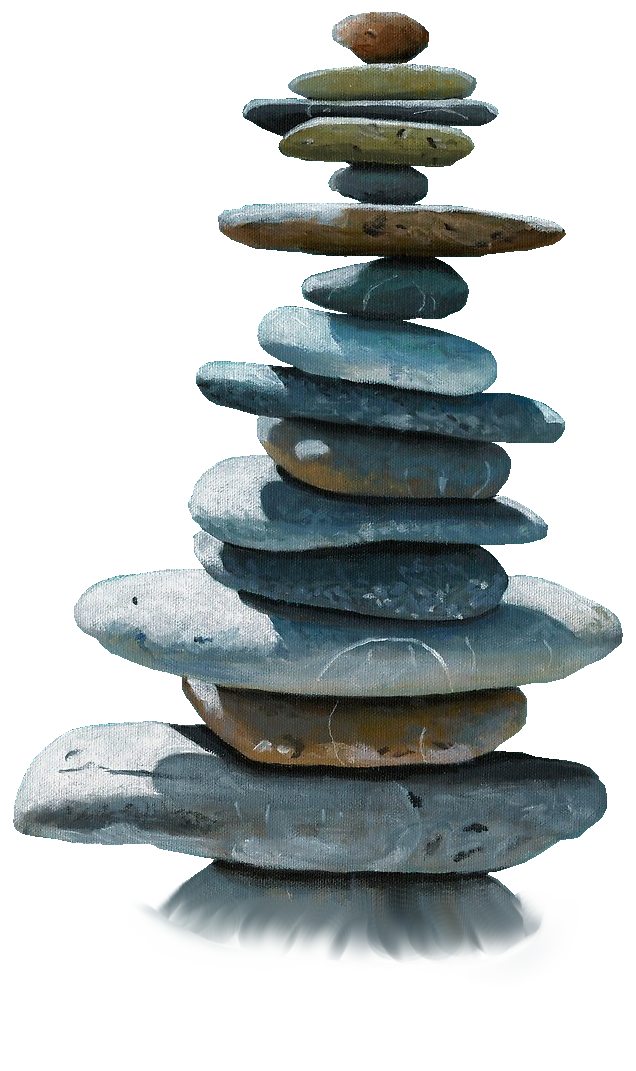
Reckless Ranger. The characters encounter a ranger doing battle with a foe. The ranger is headstrong and losing the battle. If the characters help the ranger and win the battle, the ranger is ingratiated to the party.
Sick Animal. A sick animal attacks the characters, driven to madness by its disease. The animal can be mollified by curing its illness.
Specter. A specter, ghost, or other incorporeal undead assails the characters. The spirit belongs to an adventurer that recently died in the woods. Once defeated, it fully regenerates over the course of 10 minutes. If the players can find its body and give it a proper burial, it no longer regenerates.
Swarm Defenders. A swarm of creatures is protecting a valuable resource, such as a bounty of food or a nest. The swarm attacks if a character gets too close.
Wildfire. A wildfire streaks through the forest, spearheaded by fire elementals. Defeating the elementals quells the fire and saves the forest.
Other Encounters
The following encounters can be resolved with clever thinking, conversation, or puzzle solving.
Other Forest Encounters
| 1d20 | Encounter |
|---|---|
| 1 | Abandoned hovel |
| 2 | Bean seller |
| 3 | Burial |
| 4 | Cairn |
| 5 | Decrepit ruins |
| 6 | Druidic cipher |
| 7 | Enchanted Spring |
| 8 | Grove |
| 9 | Harmless chatterer |
| 10 | Injured animal |
| 11 | Lost belongings |
| 12 | Naturalist |
| 13 | Savvy critter |
| 14 | Shifting woods |
| 15 | Shrine |
| 16 | Unique sighting |
| 17 | Unreachable treasure |
| 18 | Wary escorts |
| 19 | Weird locale |
| 20 | Well |
Abandoned Hovel. The characters notice a dilapidated lodging off the trail. It can be used as a relatively safe place to rest. It may also hold hidden secrets, at your discretion.
Bean Seller. A woodsman offers to sell the characters magic beans. You decide if the beans are a bag of beans or if the woodsman is a sham and selling mundane beans.
Burial. Characters with a passive Perception of 15 or higher notice a patch of disturbed earth. Buried beneath may be a stash of gold, a cursed magic item, or humanoid remains.
Cairn. The characters come across a cairn, stacked tall with carefully balanced stones. A character that adds a stone to the cairn without toppling it over gains a magical charm (see page 228 of the Dungeon Master's Guide). If the cairn is toppled, it releases a perturbed spirit of the forest that relentlessly attacks the characters.
Decrepit Ruins. The trail leads through decrepit ruins. The ruins are barely recognizable as structures, having been reduced to mossy stones over time. If the characters inspect the ruins, they may find a hidden passage, a confusing riddle, or a rare species of plant growing among the rubble.
Druidic Cipher. The characters pass by a message left by a druid, as described by the Druidic feature from the druid class. The message could be a pointer to a nearby location of interest, a prediction about the weather, or a cryptic omen.
Enchanted Spring. An enchanted spring appears, as described on page 165 of Tasha's Cauldron of Everything. The spring is ephemeral, and vanishes into the Feywild after 24 hours.
Grove. The characters come across a grove with plentiful grub, ready for foraging. The grove may or may not be overseen by a druid or other warden.
Harmless Chatterer. Another person or group of people are walking through the forest from the opposite direction. They speak to the characters about an event in a nearby town, something curious they found in the woods, or a hint of something relevant to your story.
Injured Animal. An injured animal is caught in a trap. If it is healed and rescued, it bestows a magical charm (see page 228 of the Dungeon Master's Guide) to one of the characters before vanishing.
Lost Belongings. A rucksack with basic survival equipment has been misplaced beside a path. Its owner is struggling to stay alive without it. If the characters reunite the bag and its owner, the owner is ingratiated to the party.
Naturalist. The characters encounter a naturalist on their travels. The naturalist is willing to divulge locations for resting and foraging in exchange for rare specimens.
Savvy Critter. A small animal is behaving weirdly. If the characters speak to it with magic, they learn that there is danger on the path ahead.
Shifting Woods. The forest path doesn't match the character's map, or it has changed somehow since the last time they visited. The characters become lost. The navigator can attempt to find the path again using the rules for becoming lost on page 111 of the Dungeon Master's Guide.
Shrine. An overgrown shrine to a deity of old rots in the woods. You can roll on the Monuments table on page 108 of the Dungeon Master's Guide to determine its appearance. If an appropriate offering is sacrificed to the shrine, it opens to reveal a magic item or some other treasure.
Unique Sighting. The characters spot something unique, but ultimately meaningless. Use this opportunity to enforce the themes of your setting. In a Sylvan forest, the characters may find abandoned birdhouse-sized sprite homes, or in an ettercap-infested copse, they may encounter a 30-foot tall spider web made of black silk.
Unreachable Treasure. Some treasure, such as a sword or a piece of jewelry is lodged somewhere bizarre and inaccessible, like the top of a tree or in the cleft of a boulder. There's a 1% chance that the treasure is a magic item.
Wary Escorts. A druid and an awakened creature insist on following the characters while they travel through the woods. They ensure the characters abide by the rules of the forest, and become hostile if they are harshly disregarded.
Weird Locale. The characters come across a strange place. Roll on the Weird Locales table on page 109 of the Dungeon Master's Guide to determine what they find.
Well. There's an old well within the underbrush. The well may offer minor blessings in exchange for coin, it may lead to a bandit hideout, or it may simply be an opportunity for the characters to have a drink of fresh water.
Encounter Complications
When you are planning a combat encounter in the forest, you can choose one or more of the following complications to add some strategical interest to the encounter.
Campsite. The encounter takes place in an abandoned campsite. Dry firewood readily takes to flame, and old tools can be used as improvised weapons.
Clearing. The encounter takes place in a clearing, where a fire has burnt away much of the forest. There's no cover for any creatures to take advantage of.
Contaminated Water. A pond, puddle, or stream is present. It's contaminated with sewer plague or sight rot (see page 257 of the Dungeon Master's Guide) or another disease of your creation.
Forest Wards. The area of the encounter is within a druid grove or hallow spell.
Inclement Weather. During the encounter, there is either strong wind, heavy precipitation, or both, as described on page 110 of the Dungeon Master's Guide.
Jungle Gym. Trees grow with a variety of branch heights, granting easy access to the canopy. Vines allow for quick access from the heights to the ground, and hollow areas of the trees can be used for cover.
Lumberyard. The encounter takes place in a region of the forest that has been logged. Tree stumps provide half cover to Small creatures. Several trees have been hacked at with an axe, but haven't toppled yet. These trees can be pushed over to create more cover or to crush other creatures.
Natural Hazards. The area of the encounter contains either desecrated ground, quicksand, or razorvine, as described on page 110 of the Dungeon Master's Guide.
Precarious Boulders. The encounter takes place on a slope. Atop the slope are boulders that can be pushed, which tumble down and crush creatures in their path.
Precious Plant. A rare plant is growing somewhere unfortunate in the area of the encounter where it is likely to be trampled and killed. The plant may or may not have remedial or alchemical properties.
Prepared Poisons or Salves. Flora in the region produce poisons or healing salves that are ready to be slathered on blades or ingested. The poisons or salves can be a fungal goo, powder from flowers, or tree sap. In any case, the poisons and salves aren't stable for long and they lose their potency after a short while unless they are purified with a poisoner's kit or herbalism kit.
Running Water. A source of running water moves through the area that is large enough to swim in. If the water is a river, it may be strong enough to be considered difficult terrain or require a Strength (Athletics) check to swim through.
Third Party. Roll on the Forest Combat Encounter table for a third party. The new combatants show up and attack both the characters and the creatures they are already fighting.
Traps. This area of the forest is heavily trapped. Hunters have rigged a littany of bear traps, pitfalls, and snares for nabbing prey.
Umbral Canopy. The thick forest canopy blocks out sunlight, making areas of dim light and darkness.
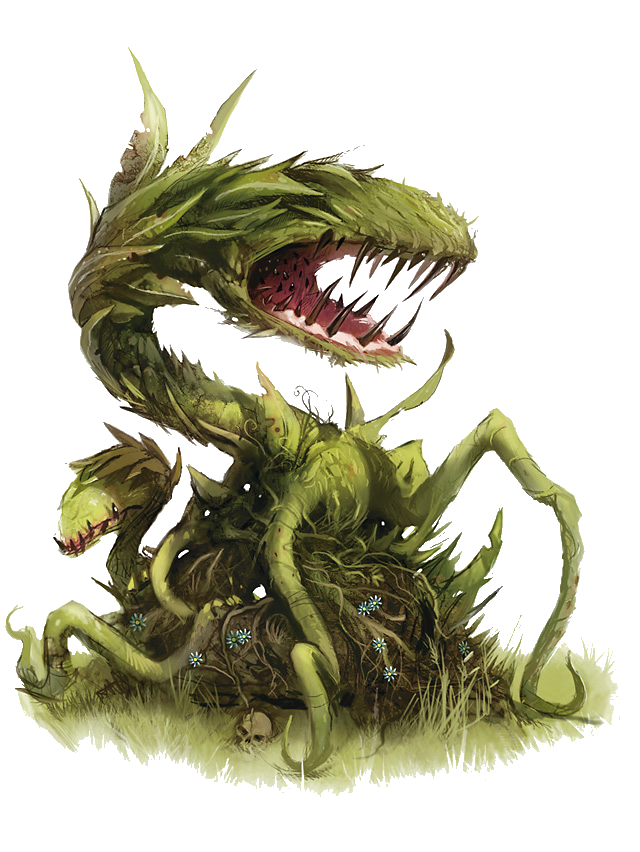
Plant Creatures
In some magical forests, plants don't sit idly by. Animated by magic, and fueled by the wickedness of the wild, plant creatures are often top predators of their ecosystems. This section includes three new plant creatures that you can use in your games.
Creating Plant Creatures. There are several traits that are conserved when creating plant creatures. Most plants have vulnerability to fire damage, and woody creatures may have resistance to bludgeoning and piercing damage. Unless you are creating a sapient plant creature, they tend to have low Intelligence and Charisma scores.
Man Eater
Large Plant, unaligned
- Armor Class 10 (natural armor)
- Hit Points 44 (8d10)
- Speed 20 ft., climb 20 ft.
STR DEX CON INT WIS CHA 15 (+2) 8 (–1) 10 (+0) 4 (–3) 10 (+0) 5 (–3)
- Damage Vulnerabilities fire; slashing damage from creatures that are engulfed by the man eater
- Damage Resistances piercing
- Senses passive Perception 10
- Languages —
- Challenge 1 (200 XP) Proficiency Bonus +2
Root Sense. If the man eater doesn't move on its turn, it can choose to be rooted until the end of its next turn. While rooted, the man eater's speed is reduced to 0, it gains tremorsense out to a range of 60 feet, and the range of its vine lash attack increases by 10 ft.
Actions
Multiattack. The man eater makes two melee attacks.
Vine Lash. Melee Weapon Attack: +4 to hit, reach 5 ft., one target. Hit: 9 (1d12 + 2) slashing damage.
Trapping Bite. Melee Weapon Attack: +4 to hit, reach 5 ft., one target. Hit: 4 (1d4 + 2) piercing damage, and the target is swallowed if it is a Medium or smaller creature. A swallowed creature is blinded and restrained, has total cover against attacks and other effects outside the man eater, and takes 7 (2d6) acid damage at the start of each of the man eater's turns.
If the man eater takes 15 damage or more on a single turn from a creature inside it, the man eater must succeed on a DC 20 Constitution saving throw at the end of that turn or regurgitate the swallowed creature, which falls prone in a space within 5 ft. of the man eater. If the man eater dies, a swallowed creature is no longer restrained by it and can escape from the corpse using 10 ft. of movement, exiting prone.
As predatory plants of bleak woods, man eaters have the taste for flesh. They stalk prickly brambles on the boundary between civilization and the wilds, waiting for their chance to strike at their favorite prey—humanoids. If a man eater is able to snatch several large meals in a week, it goes dormant while producing seeds. A single seeding event can produce a thousand or more plantlings.
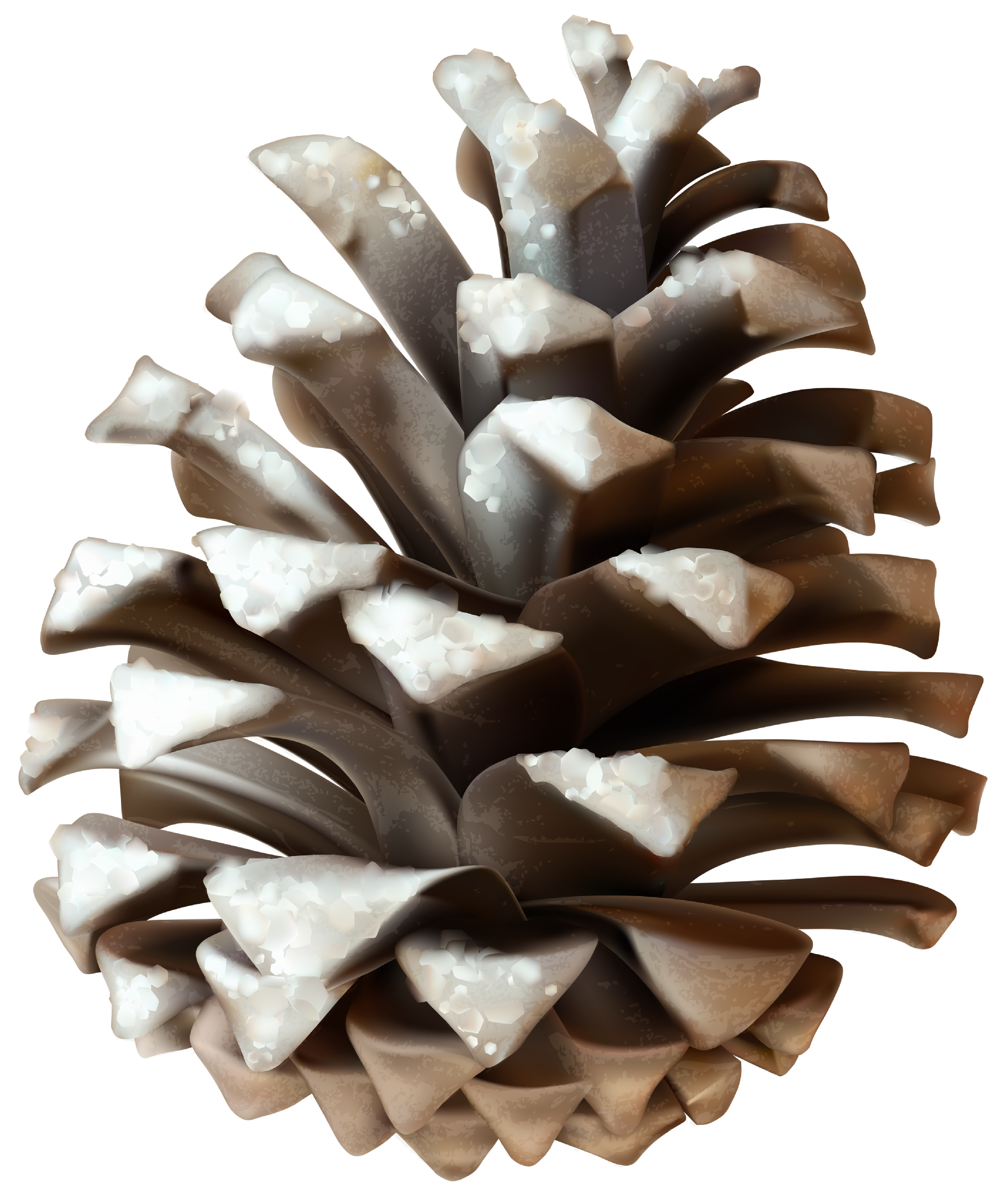
Pluck-Me-Not
Tiny Plant, unaligned
- Armor Class 12
- Hit Points 2 (1d4)
- Speed 30 ft.
STR DEX CON INT WIS CHA 5 (–3) 14 (+2) 10 (+0) 1 (–5) 10 (+0) 3 (–4)
- Senses passive Perception 10
- Languages —
- Challenge 0 (10 XP) Proficiency Bonus +2
Death Burst. When the pluck-me-not dies, it explodes in a burst of flames. Each creature within 10 ft. of it must make a DC 12 Dexterity saving throw, taking 9 (2d8) fire damage on a failed save, or half as much damage on a successful one. Other pluck-me-nots are immune to this damage.
Actions
Prime. The pluck-me-not moves up to its speed, and then it dies.
Pluck-me-nots are the seed casings of several varieties of coniferous trees. Depending on the tree, pluck-me-nots can resemble bristly pinecones or a lumpy green fruit, and they always have stumpy legs which allow them to run. They serve as both a defense mechanism and as a method for dispersing seeds far from the parent tree.
Vampire ash trees are among the most conniving plants. They are infected with a form of vampirism, granting them otherwordly charm and guile (for a plant). They take root in ideal resting spots where they can passively feed on the life force of weary travelers. If they need to engage in direct combat, they possess two special elongated branches for stabbing and sucking blood like the proboscis of a mosquito.
Vampire Ash
Huge Plant, unaligned
- Armor Class 16 (natural armor)
- Hit Points 142 (15d12 + 45)
- Speed 20 ft.
STR DEX CON INT WIS CHA 19 (+4) 6 (–2) 16 (+3) 5 (–3) 14 (+2) 13 (+1)
- Damage Vulnerabilities fire
- Damage Resistances necrotic; bludgeoning, piercing, and slashing from nonmagical attacks
- Senses darkvision 120 ft., passive Perception 12
- Languages understands Common but can't speak
- Challenge 8 (3,900 XP) Proficiency Bonus +3
Sapping Aura. While its alive, the vampire ash generates a draining aura within a 30-foot radius of itself. Other creatures can't benefit from resting while they are within the aura, and a creature must succeed on a DC 14 Constitution saving throw against disease at the end of each hour spent in the aura. On a failed save, the infected creature's hit point maximum decreases by 1d10 each day at midday until they are cured. The creature dies if its hit point maximum is reduced to 0, and the vampire ash's hit point maximum is permanently increased by 1d10.
Vampire Weaknesses. The vampire ash can't enter a residence without an invitation from one of the occupants. Also, it takes 20 acid damage if it ends its turn in running water. Lastly, it takes 20 poison damage if it ends its turn within 5 ft. of garlic.
Actions
Multiattack. The vampire ash makes two leeching shank attacks. Alternatively, the vampire ash makes up to one battering branch attack against each creature within range, but it can't move between each attack.
Battering Branch. Melee Weapon Attack: +7 to hit, reach 5 ft., one target. Hit: 15 (2d10 + 4) bludgeoning damage.
Leeching Shank. Melee Weapon Attack: +7 to hit, reach 10 ft., one target. Hit: 9 (1d10 + 4) piercing damage plus 18 (4d8) necrotic damage, and vampire ash regains a number of hit points equal to the necrotic damage it dealt.
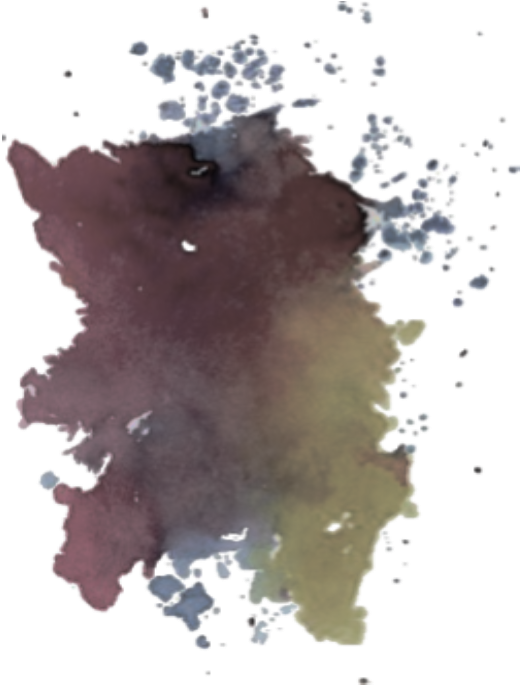
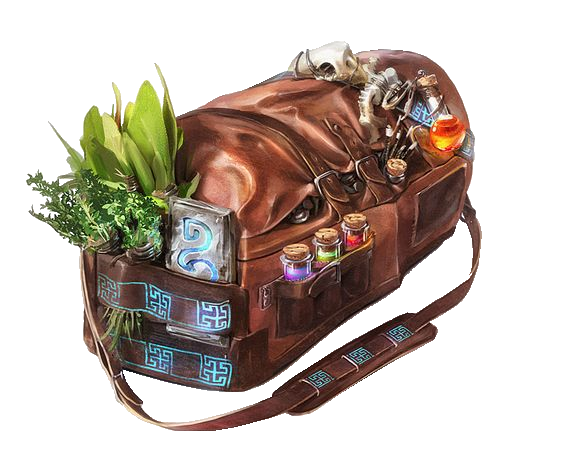
Herbal Remedies
The herbalism kit from the Player's Handbook states that it can be used to create herbal remedies in addition to potions of healing and antitoxin. Below is a list of sample remedies that a character using an herbalism kit can create, given that they have an equivalent amount of materials for creating a common potion of healing (50 gp of materials). Remedies function identically to potions, though they are applied topically instead of by ingestion.
Remedy of Awakening
Potion, common
This remedy has 3 doses. An unconscious creature at 0 hit points that receives a dose regains 1 hit point.
Remedy of Good Health
Potion, common
This remedy instantly soothes all headaches, malaise, and digestive troubles of the creature that receives it. It also suppresses the effects of all nonmagical diseases affecting the creature, for 24 hours.
Remedy of Harmony
Potion, common
A creature that receives this remedy regains an additional 1d4 hit points each time a creature restores their hit points using a spell slot. The effects of this remedy wear off after 1 minute.
Remedy of Miracles
Potion, common
When this remedy is applied to a creature's nonfunctional eyes, they regain the ability to see. When this remedy is applied to a creature's nonfunctional ears, they regain the ability to hear. The effects of this remedy wear off after 24 hours.
Remedy of Poultices
Potion, common
A creature that receives this remedy regains 1d12 hit points.
Remedy of Rejuvenation
Potion, common
This remedy has 30 doses. A creature that receives a dose is graced with clear skin—scars, acne, discolorations, pockmarks, and other imperfections the creature wasn't born with all vanish, but reappear after 24 hours unless another dose is applied.
Remedy of Vigilance
Potion, common
This remedy has 2 doses. A creature that receives a dose during a long rest can sleep for 2 fewer hours without suffering any negative consequences for lack of sleep, but completes the rest in the usual amount of time.
Credits
- Created by Andrew/Ogskive
- Made using GMBinder
- Thanks to my friends for helping to fill out the tables and generate ideas!
- Thanks specifically to my pal 4evercelebi for his thorough feedback and suggestions!
Art
- Cover by Takeda11
- Theme modified from blckthorn's theme
- Watercolor stain by Jared Ondricek
- Forest by Sylvain Sarrailh
- Cairn by Ria Hills
- Splotch by Womanscrush
- Man eater owned by Wizards of the Coast
- Pinecone by natis76
- Satchel by Tibor Sulyok
- Splotch by isabelah24
Woodsman's Wilds is unofficial Fan Content permitted under the Fan Content Policy. Not approved/endorsed by Wizards. Portions of the materials used are property of Wizards of the Coast. ©Wizards of the Coast LLC.
Woodsman's Wilds is a sequel to Barmaid's Brewery. You can find Barmaid's Brewery by following this link: https://www.gmbinder.com/share/-MxFggGqihB1KxDz7G_n
You can find a list of all of my homebrew creations by following this link: https://www.gmbinder.com/share/-MsQWLEloE3eRTn6bdDt